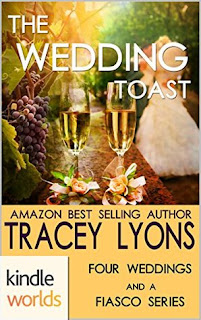Happy Holidays, Hungry Readers!
Instead of giving you the same-old best-seller list of gift suggestions, I thought I'd make this year's post a little more personal and share which books my family will be giving/receiving. Maybe you'll find one of them to be a good gift for someone you know as well. :)
The Guinness World Records 2017 edition is for the boy child, but it always turns into a full-family gift as he reads aloud every. single. record. Mostly interesting for all, but beware this is not for the faint of heart; many of the bug and FOOD records can be quite disgusting!
The American Girl Guide is for the girl child because, like any fictional character, even the dolls have extensive back-stories. More history = deeper understanding = more imaginative and intelligent play!
Harry Potter #4 is for my husband, the most-behindest reader of all time. ;) We have a family rule that we can't watch a film until we've read the book and he REALLY wants to catch up to the rest of us with the movies, so now he can use the vacation week to crack this spine!
As for me, I have asked for - and hopefully not delusionally expect to recieve - The Bible as read by James Earl Jones. This tome of all tomes has been on my TBR list since really the beginning of days but its sheer size has kept it anchoring the bottom of the pile. But then, Totes Magotes!, I find a version that will be read to me by the greatest narrator* of all time?! It's the only item on my Santa list and I have been VERY good this year...
Instead of giving you the same-old best-seller list of gift suggestions, I thought I'd make this year's post a little more personal and share which books my family will be giving/receiving. Maybe you'll find one of them to be a good gift for someone you know as well. :)
The Guinness World Records 2017 edition is for the boy child, but it always turns into a full-family gift as he reads aloud every. single. record. Mostly interesting for all, but beware this is not for the faint of heart; many of the bug and FOOD records can be quite disgusting!
The American Girl Guide is for the girl child because, like any fictional character, even the dolls have extensive back-stories. More history = deeper understanding = more imaginative and intelligent play!
Harry Potter #4 is for my husband, the most-behindest reader of all time. ;) We have a family rule that we can't watch a film until we've read the book and he REALLY wants to catch up to the rest of us with the movies, so now he can use the vacation week to crack this spine!
As for me, I have asked for - and hopefully not delusionally expect to recieve - The Bible as read by James Earl Jones. This tome of all tomes has been on my TBR list since really the beginning of days but its sheer size has kept it anchoring the bottom of the pile. But then, Totes Magotes!, I find a version that will be read to me by the greatest narrator* of all time?! It's the only item on my Santa list and I have been VERY good this year...
Be sure and let me know the best reads you give and receive this holiday season;
Happy Holidays to All and to All a Good Read!
































